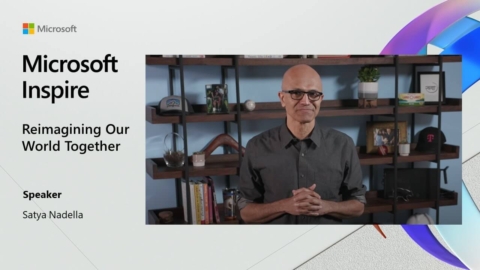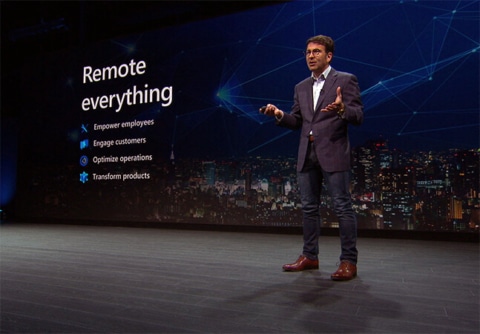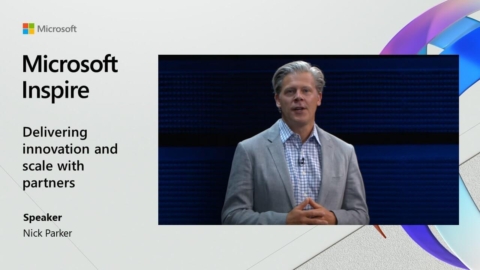What was different about Microsoft Inspire 2020?
Now in its 17th year, the 2020 edition of Microsoft Inspire was unique in many ways. It was the first time that the summit was held entirely online, a necessity given the current COVID-19 pandemic. The conference was also a bit shorter than usual, lasting just two days instead of the typical week-long lineup.
But Microsoft didn’t let these changes impact the quality or quantity of information being communicated. The success of this new digital format is in fact representative of the main theme that emerged from Microsoft Inspire 2020: that the business world is rapidly transforming into a digital one, and Microsoft technologies are equipped to take us there.

5 key Microsoft Inspire 2020 takeaways
1. The future of post-pandemic work is remote.
Scores of companies around the world went into emergency remote work mode in early 2020 due to the coronavirus outbreak. Months later, it’s now clear that what was first considered a temporary solution is in fact a permanent shift in the way businesses operate. As companies uncover the wealth of benefits associated with a remote workforce, many are planning to keep a partial or full remote work structure in place even after the threat of the virus has subsided.
Of course, remote work isn’t possible without the technologies that keep us connected wherever we are in the world. Many of the updates and features announced at Microsoft Inspire 2020 centered around the theme of making remote work more accessible – helping companies to realize, as Corporate Vice President Gavriella Schuster put it, “the full value of Microsoft 365 as a secure, remote work collaboration solution.”
A great example of this is Windows Virtual Desktop (WVD), which Microsoft released at the end of 2019 and has been deployed by tens of thousands of companies since the onset of COVID-19. At Inspire, Microsoft revealed new WVD integrations with the Azure Portal and Microsoft Teams to support faster virtual desktop deployment and a better video conferencing experience.

2. Teams is emerging as the face of Microsoft 365…
There’s much more to Microsoft 365 than just Teams, but in a remote work ecosystem, Teams is the common thread that unites us all. Teams facilitates communication between employees; it’s where collaboration happens and decisions are made. Microsoft recognizes this and has responded with a full roster of new features that we’re excited to start working with.
Here’s a brief rundown of the Microsoft Inspire highlights regarding changes to Teams:
- To support a safe partial return to the office in hybrid remote setups, Teams Rooms has gotten a makeover with new features packaged into two license options: Standard and Premium. Connect remote employees to the conference room more easily with better device management options and integration with the Teams Admin Center. Premium customers can also benefit from 24/7 Microsoft IT service for round-the-clock support.
- Developers have been given enhanced control over meetings with the ability to preconfigure meeting setups with personalized app experiences.
- Together Mode is a new video calling feature that places all participants on a shared background to simulate togetherness. Visualizing everyone in the same room, Microsoft says, will improve nonverbal communication in those remote meetings.
- Low code apps like chatbots can now be built directly in teams via integrations with the Power Platform. This is supported by Dataflex, a newly released data platform that now comes with the Teams experience. Plus, with an all-new Power BI personal app for Teams, you’ll also be able to access and share reports without leaving the chat.
- Frontline workers are front and center with added Teams features that help managers create schedules more efficiently and turn any Android device into a walkie talkie.
With so many promising changes, we’ll be continuing to provide support to Powell Software customers as they integrate these new features. We’re also looking forward to leveraging Dataflex in our own analytics dashboard to give you even more insight.
3. …but all Microsoft products are more connected than ever.
Most of the updates to Teams and other apps that were announced at Microsoft Inspire 2020 share a commonality: they form bridges between Microsoft 365 products. This isn’t accidental. Microsoft is moving towards a future in which its suite is task-based, not app-based. Corporate Vice President Jon Friedman addressed this in a blog post that discussed Microsoft 365’s trajectory, referencing an ecosystem that “increasingly decouples app capabilities from the apps themselves, leaving you free to use functionality whenever, however, and wherever you need it.” As a user, you should expect the lines to be blurred even more in the coming years.
4. Everything is moving to the cloud.
This year has made cloud accessibility more valuable than ever, and Microsoft has delivered with more cloud-based enhancements like Windows Virtual Desktop. But we’ve also learned that security becomes a cause for concern as companies transfer information to digital locations. This was addressed in many Microsoft Inspire announcements, including the introduction of Endpoint Data Loss Prevention, which increases protection against data leaks through internally defined policies. We also saw the release of new third-party connectors for Microsoft Azure Sentinel and Double Key Encryption for Microsoft 365.
5. Microsoft values its relationships with partners.
In his keynote speech, CEO Satya Nadella called Microsoft a “partner-led company”. While Microsoft provides technologically powerful platforms, real innovation happens through the collaboration between business users and partners, and Powell Software is honored to be among them. We’re looking forward to leveraging these new technologies in the Powell 365 platform and Powell Governance application – and continuing to release our own updates as we provide you with a future-proof remote working platform.




